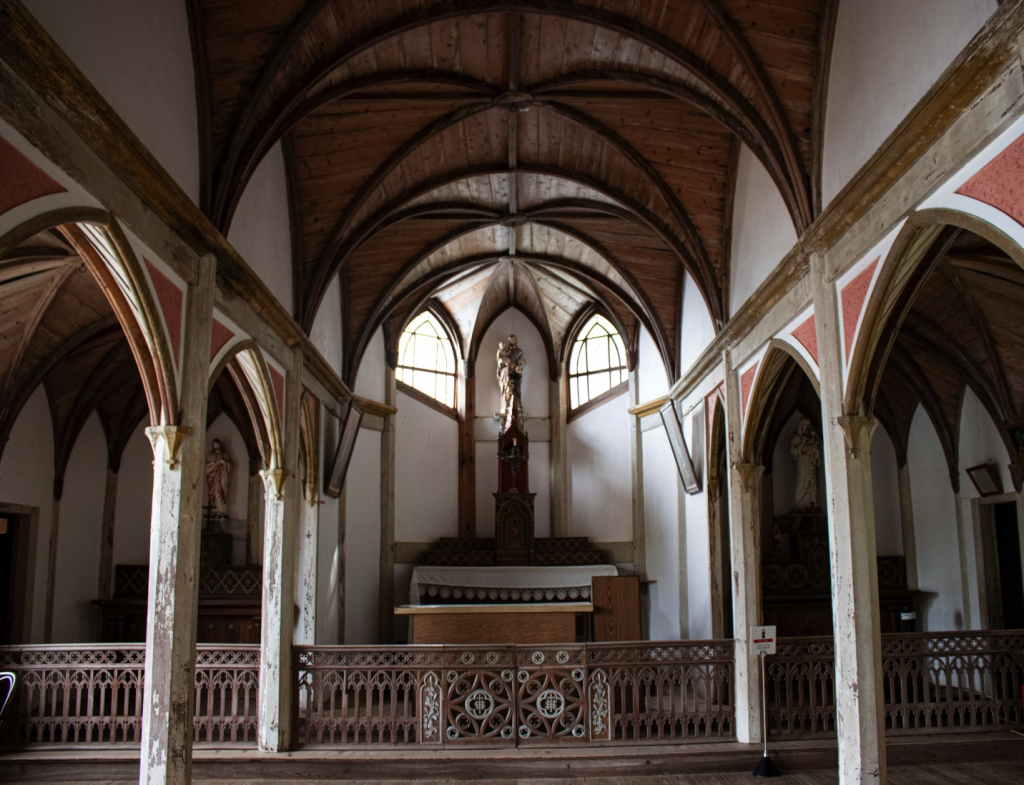Stained glass with camellia motifs and pictures of sunlit churches greet visitors at Fukue Airport, on the biggest of the five Goto Islands which are located in Nagasaki Prefecture. I’m immediately given a pamphlet with stained glass on the cover, its pages filled with beautiful churches scattered around the islands. Between the red-brick temples of worship flanked by palm trees and the white statues of saints and martyrs, you might easily forget you’re in Japan. After all, barely one percent of Japan’s population is Christian and, fancy wedding chapels located in hotels aside, churches are a rarity.
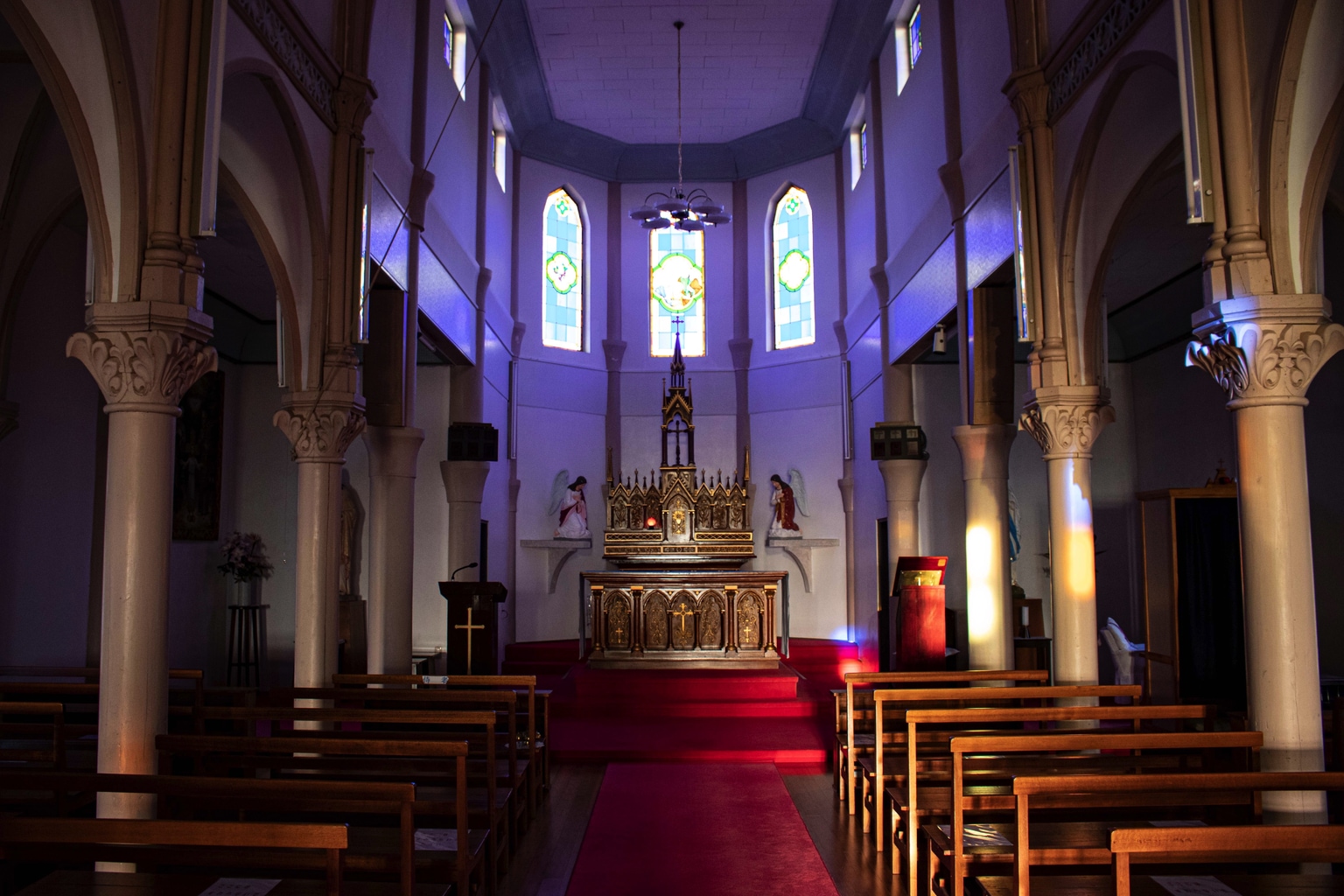
Inside Kusuhara Church
On the Goto Islands, however, it’s a different story. There are around 50 churches on the islands, a few of them UNESCO designated as World Cultural Heritage in 2018. Around five to ten percent of the current population is Christian, with the locals telling us it used to be around 50 percent. The very existence of the Goto Christians today is a testament to the perseverance of their ancestors who are known as “hidden Christians.”
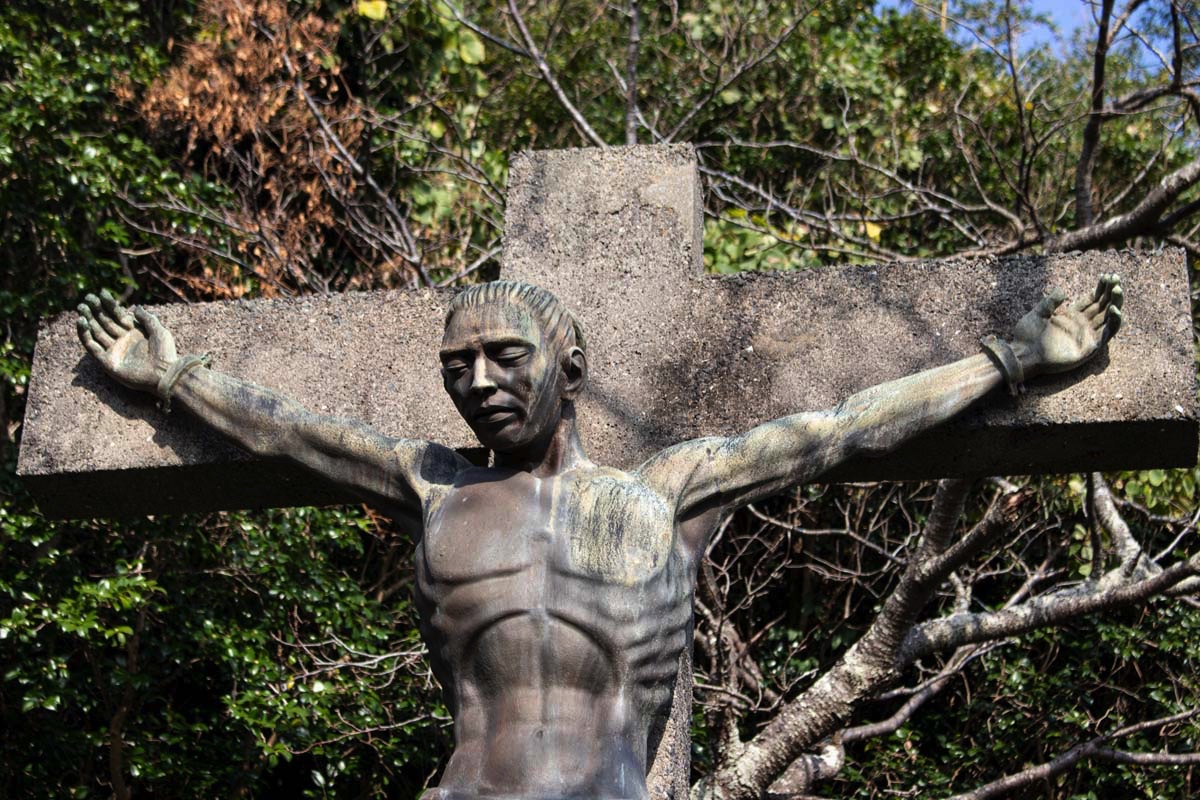
Hidden Christians on Goto Islands
Persecuted, forced to step on their sacred icons in an act known as fumi-e and even executed, the Christians in Japan have a long history of martyrdom. Christianity was outlawed by the shogunate in 1614, a time when Japan was closed to the world. This ban was eventually repealed in 1873, five years into the Meiji Restoration.
Many gave their lives, but many more took the burden of living and believing in secret. Trying to escape the ever-present scrutiny in Nagasaki, hidden Christians started moving to the Goto Islands. It wasn’t safe to practice their faith in public there either, but their secret was marginally safer. They learned prayers by heart and they prayed to a Buddhist statue of the Kannon goddess who reminded them of the Virgin Mary. Many of these artifacts are now on display in Dozaki Church on Fukue Island.
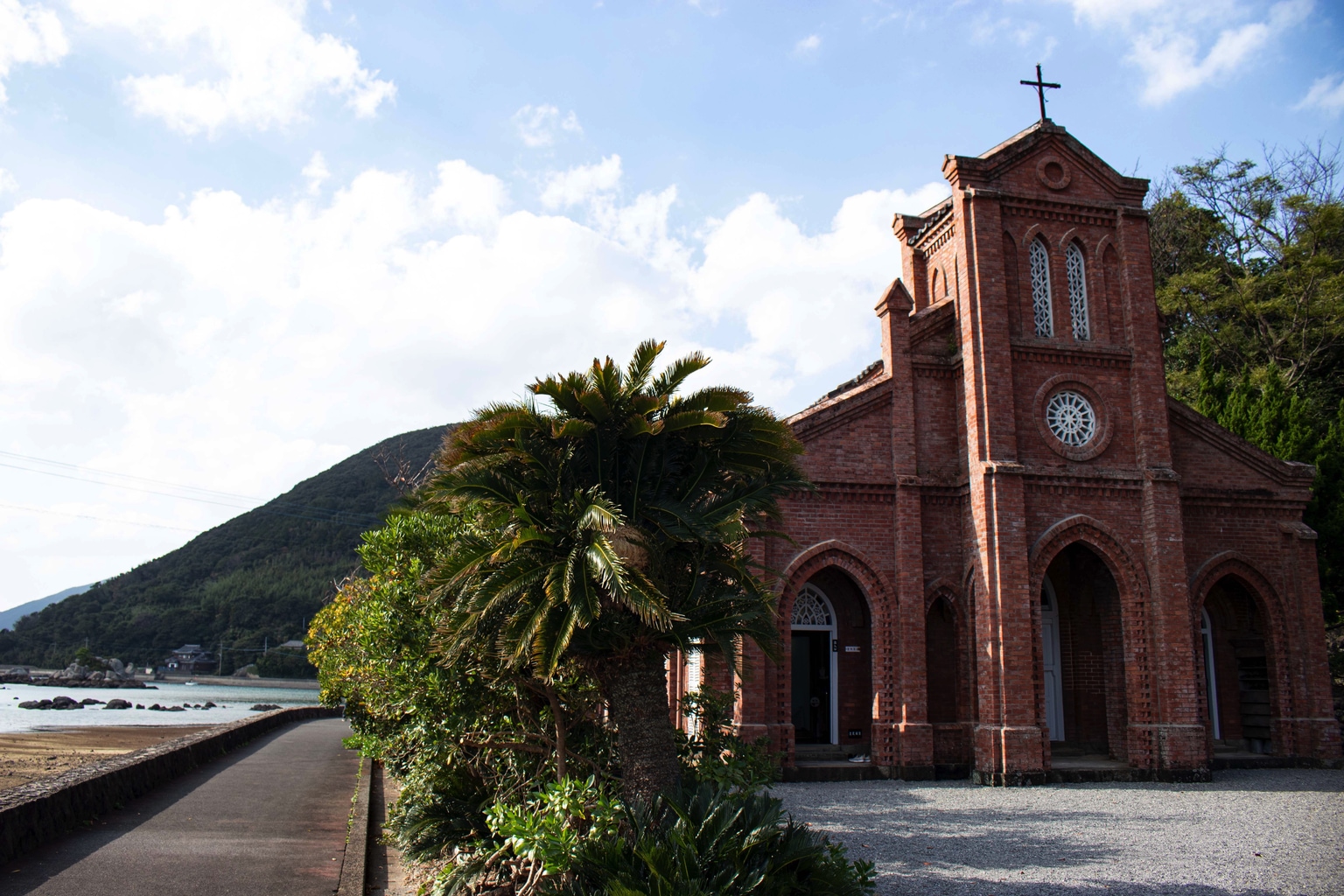
Dozaki Church
As we cycle around the island looking at the almost perfectly conical Onidake Volcano, our guide, Will, tells us a poignant story of a Christian family living in a cave. They evaded detection for a while, but ultimately the fire they lit gave them away and they were captured. Today, the cave is one of the holy sites of the hidden Christians.
The Churches of Goto Islands
Many of the churches standing today are built on former Christian hideouts or prisons for believers. They wanted to honor the sacrifice of their ancestors and in a way make the sites sacred. The Mizunoura Church is one of those sites. The parish priest also shows us around Kusuhara Church, a red-brick building with beautiful stained glass windows and seashells holding holy water. It’s the second oldest church in Goto, and the oldest church currently in use.
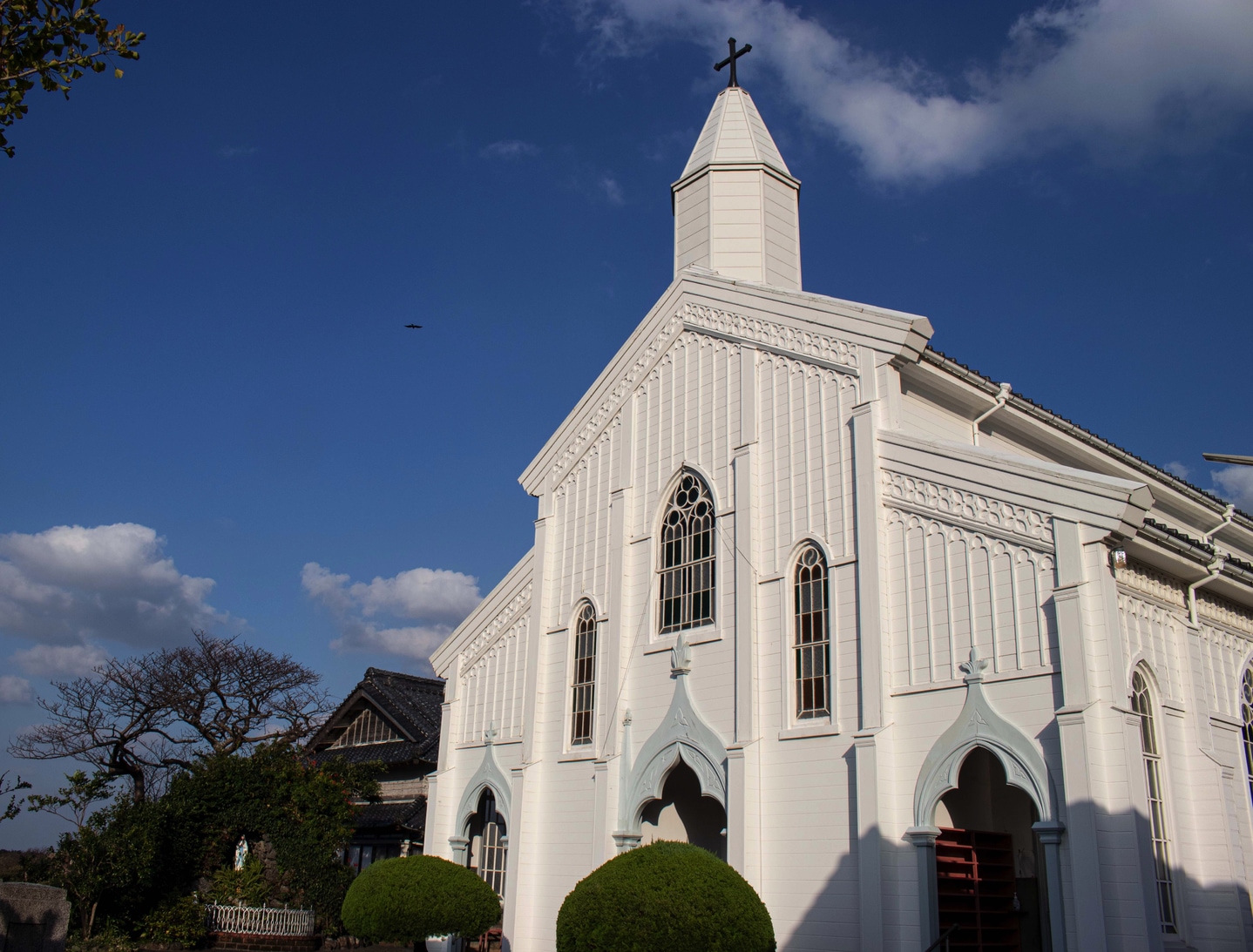
Mizunoura Church
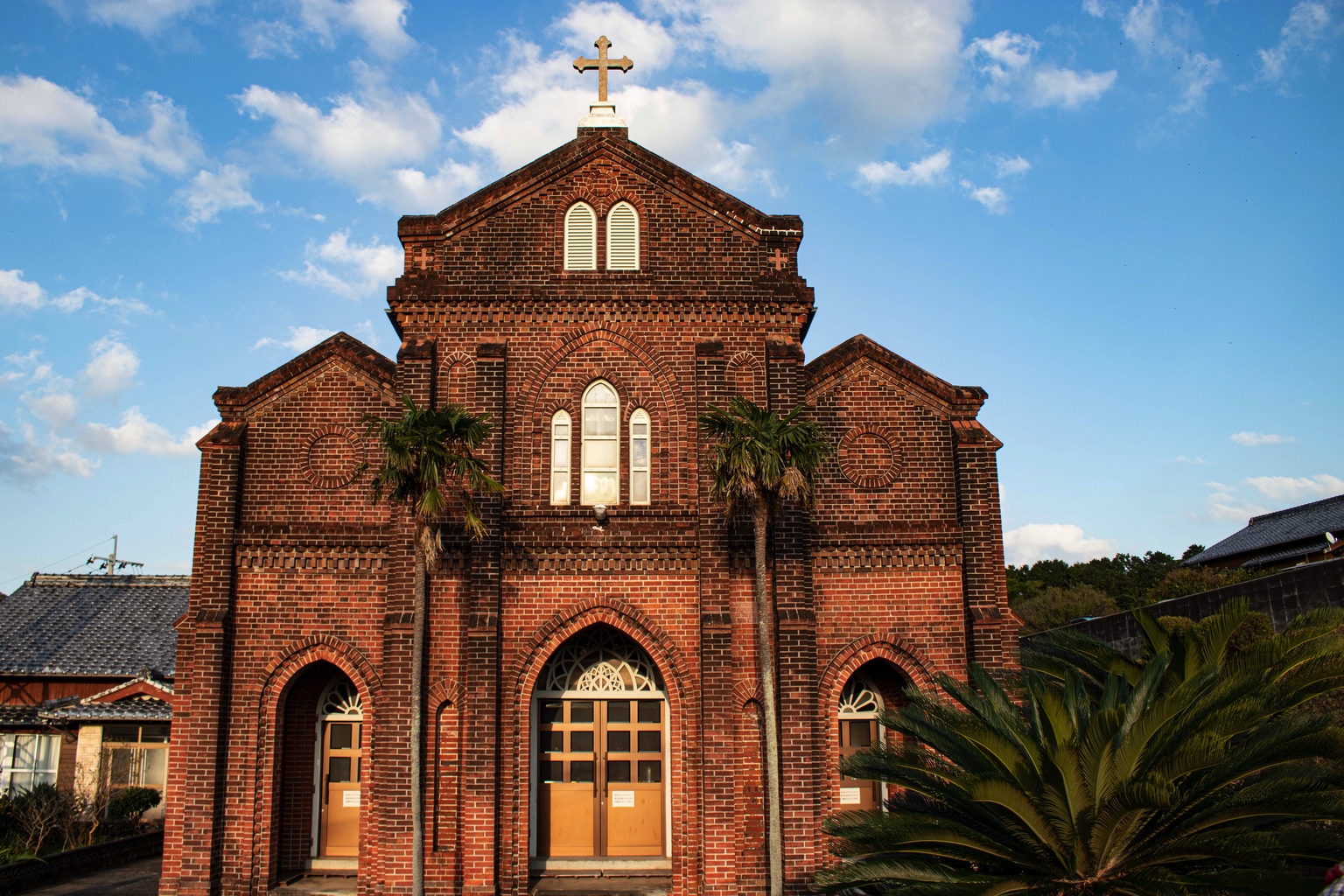
Kusuhara Church
The most iconic red-brick church on Goto, however, is Dozaki Church. It’s the oldest church, built by French missionaries on Fukue Island after Christianity was decriminalized. The locals are fond of its history as the church offered jobs to women and a home to orphans. Today it’s a museum with a fascinating insight into Japanese Christianity.
The islands also host some wooden churches from the early 20th century. In Japan, wood is the quintessential building material for Shinto shrines and Buddhist temples. “It was only natural to work with what local carpenters knew best,” Yukari Yamada, professor of architectural history at Nagasaki Institute of Applied Science, explains. Yosuke Tetsukawa, one of the island’s most famous carpenters and a Goto native built many of these structures, including both Hantomari and Egami churches.
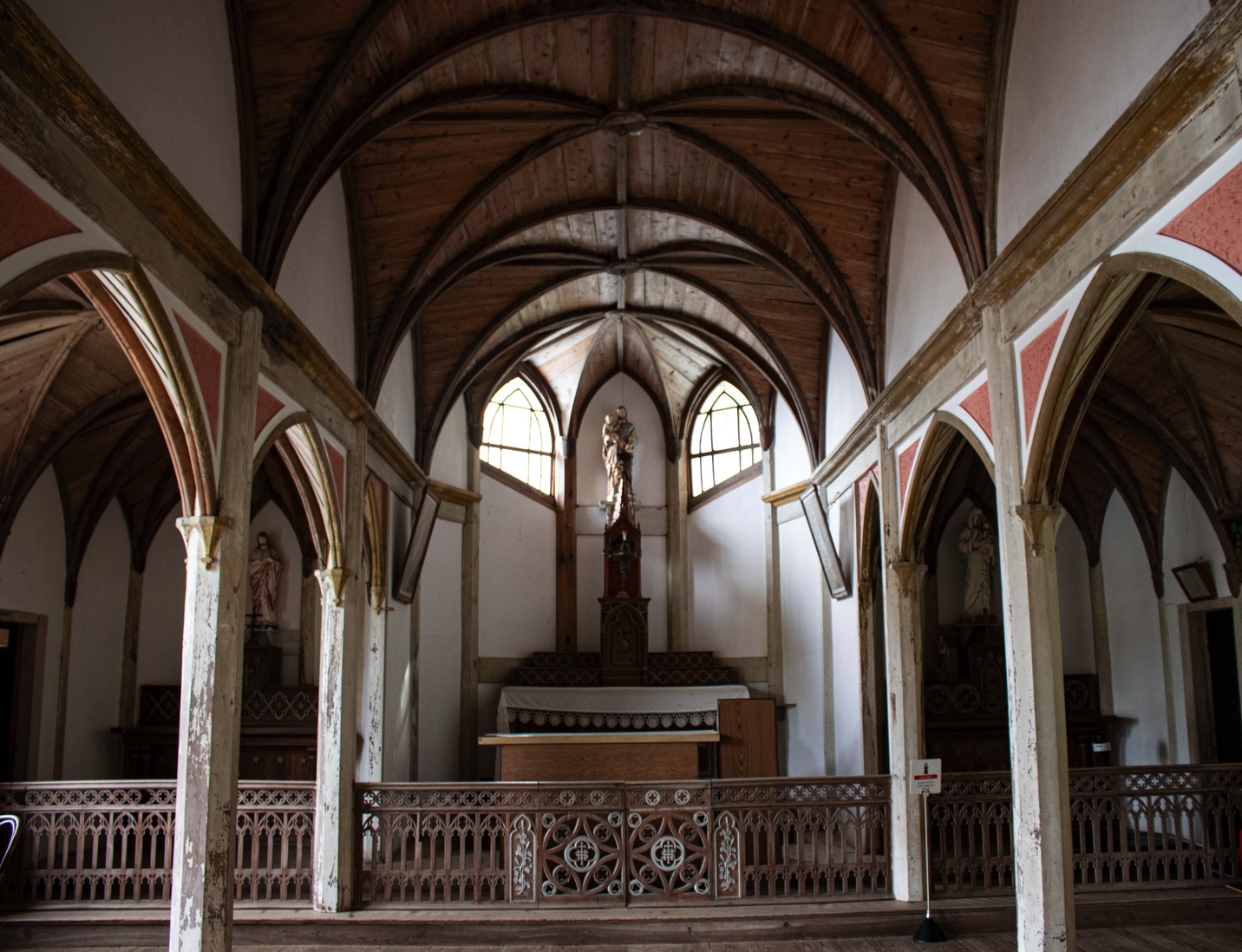
Former Gorin Church
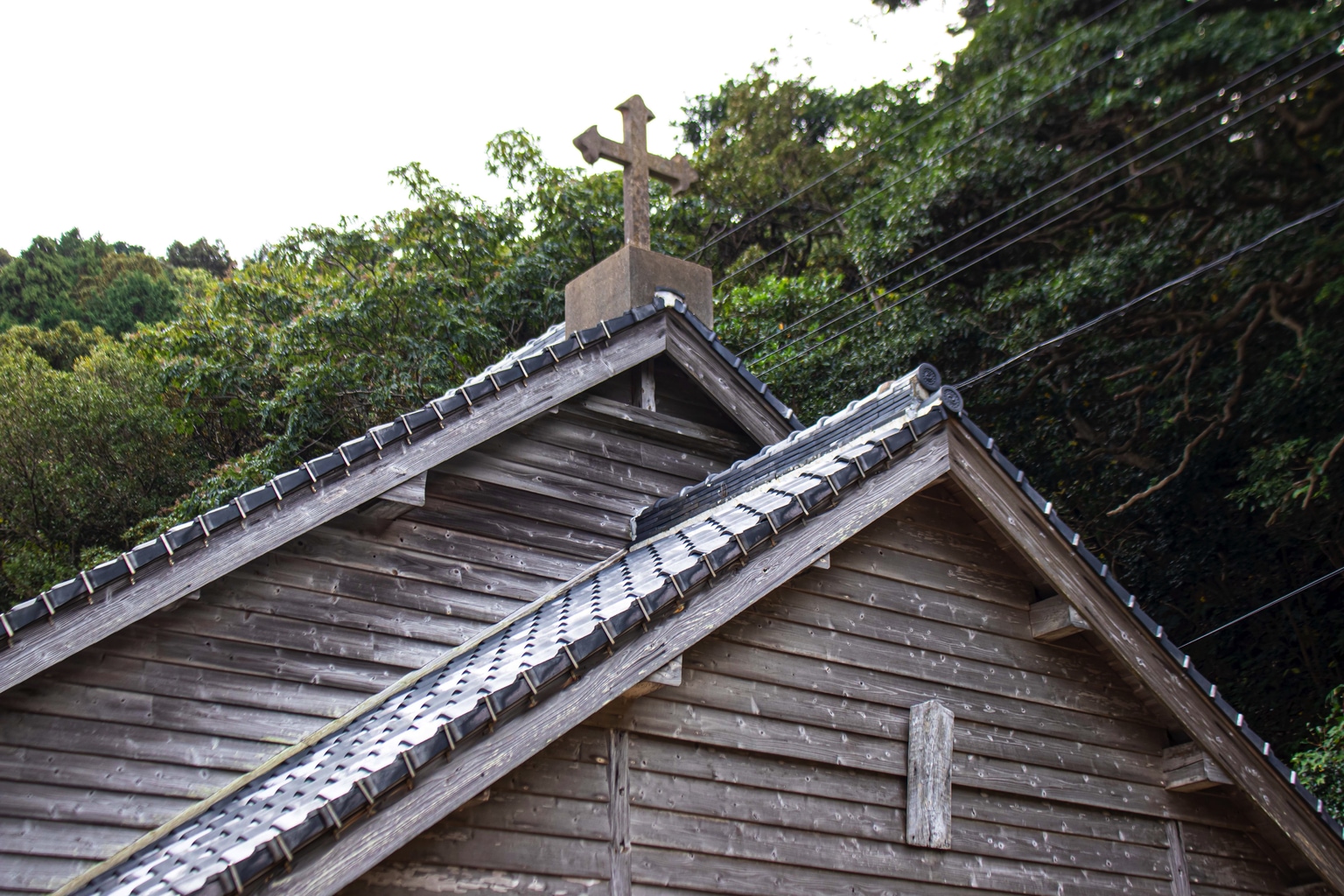
The Former Gorin Church, a World Heritage site, is another well-preserved wooden structure and now stands next to its newly built successor. Side by side, they are a great example of Goto’s Christian past and present.
The Christian Community in Goto Today
We meet the caretaker of Egami Church on Naru Island, another one of the UNESCO World Heritage sites on Goto. Shinji Yaguchi, a Christian himself, explains the dwindling number of Christians on the islands. Many went back to Nagasaki when Christianity was no longer a crime. Nowadays, younger people keep moving away to bigger cities for better opportunities.
“And many daughters give up Christianity when married into Buddhist or Shinto families,” our guide Miyuki Ogawa adds. She tells us she was christened by her mother, but nothing more. Her mother stopped practicing Christianity after marriage.
“You should come back for Christmas,” they both tell me. “Many people with Goto roots come back for the big holidays and the churches are at their fullest.”
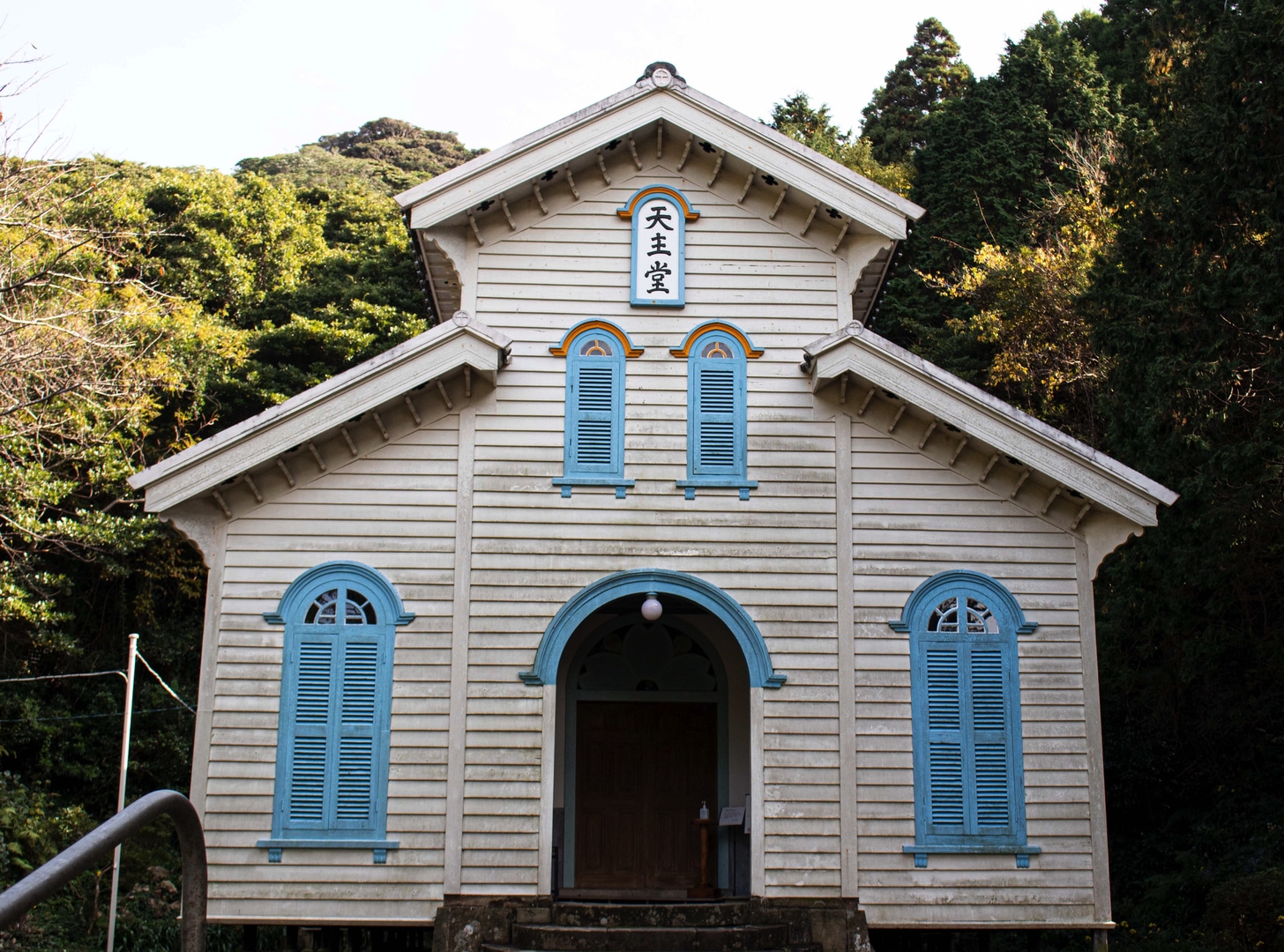
Egami Church
Stories of the People of Goto Islands
I meet Yumiko Hamasaki by chance when idly browsing souvenirs at the Furusatokan Pavilion. She’s a local, a Christian and the woman who’s created many of the stained glass windows in the churches we visited. Among them, a full replica of the same windows in Hantomari Church after a typhoon destroyed them. She’s been at it for 23 years, as part of Miiraku Kobo, the only glassmaking workshop on the islands.
It’s hard raising money for repairs, Hamasaki admits, but everyone in the congregation helps. They also do stained glass painting workshops and cooking lessons where they share their ancestral recipes that survived the persecutions. Manju steamed buns wrapped in wild rose leaves to signify Christ’s crown of thorns are a standout example.
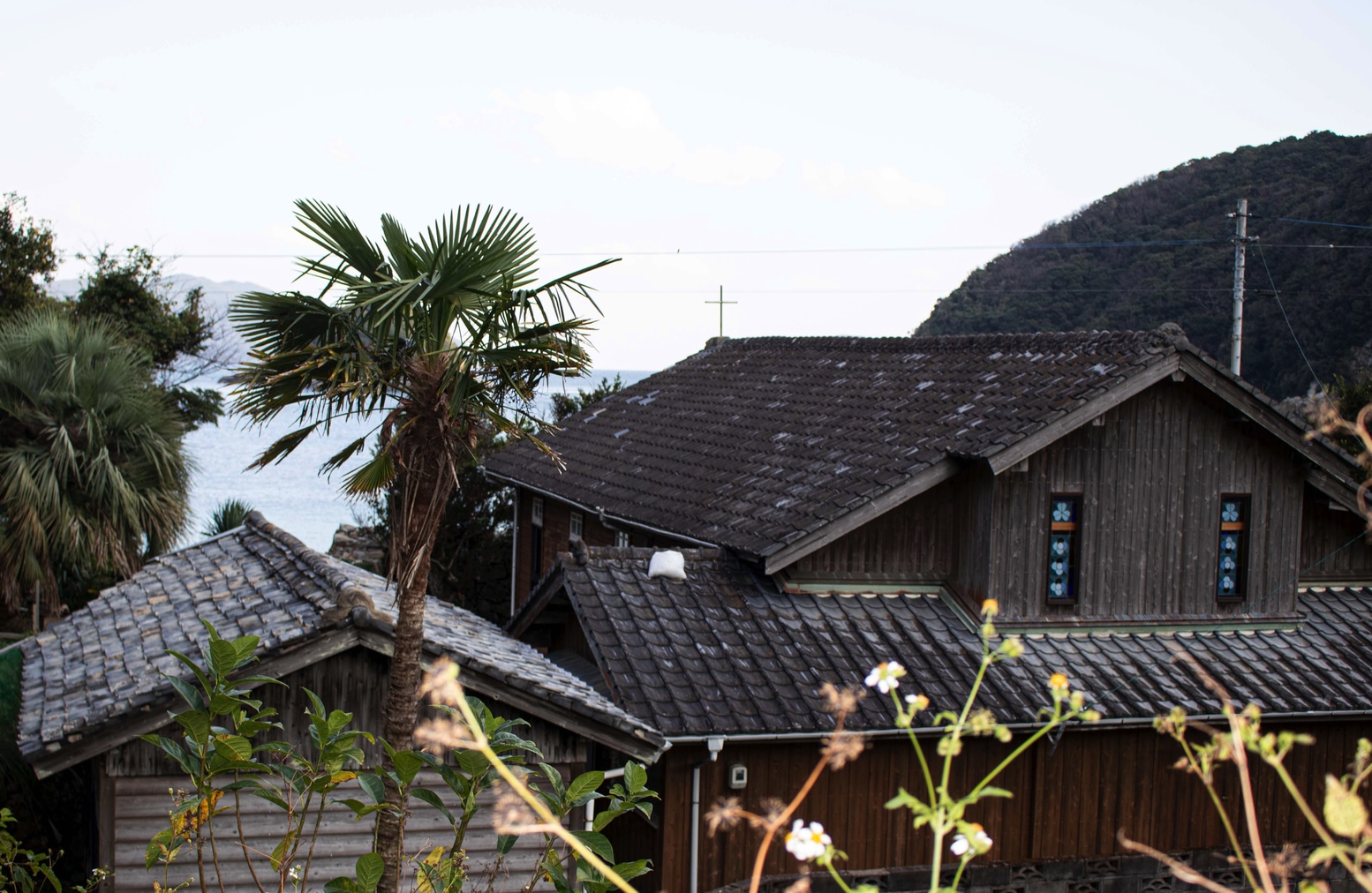
Hantomari Church
We are joined by Shiho Umeki who tells me to open that same pamphlet with stained glass on the cover I received when I landed in Fukue. Its pages are filled with beautiful churches, but she points to a black and white photo of an elderly woman holding a baby. “This is my husband’s ancestor,” she tells me.
Christians on Goto, today, carry stories of ancestral suffering and they’re open to sharing them. Their ancestors were in hiding for around 250 years, passing on their faith in secret. The Christians of Goto today don’t want that to have been for nothing.
The two women tell me to come back and make fukure manju with them. Seeing how warmly they welcomed me, I assume it’s an open invitation for anyone who wants to visit.
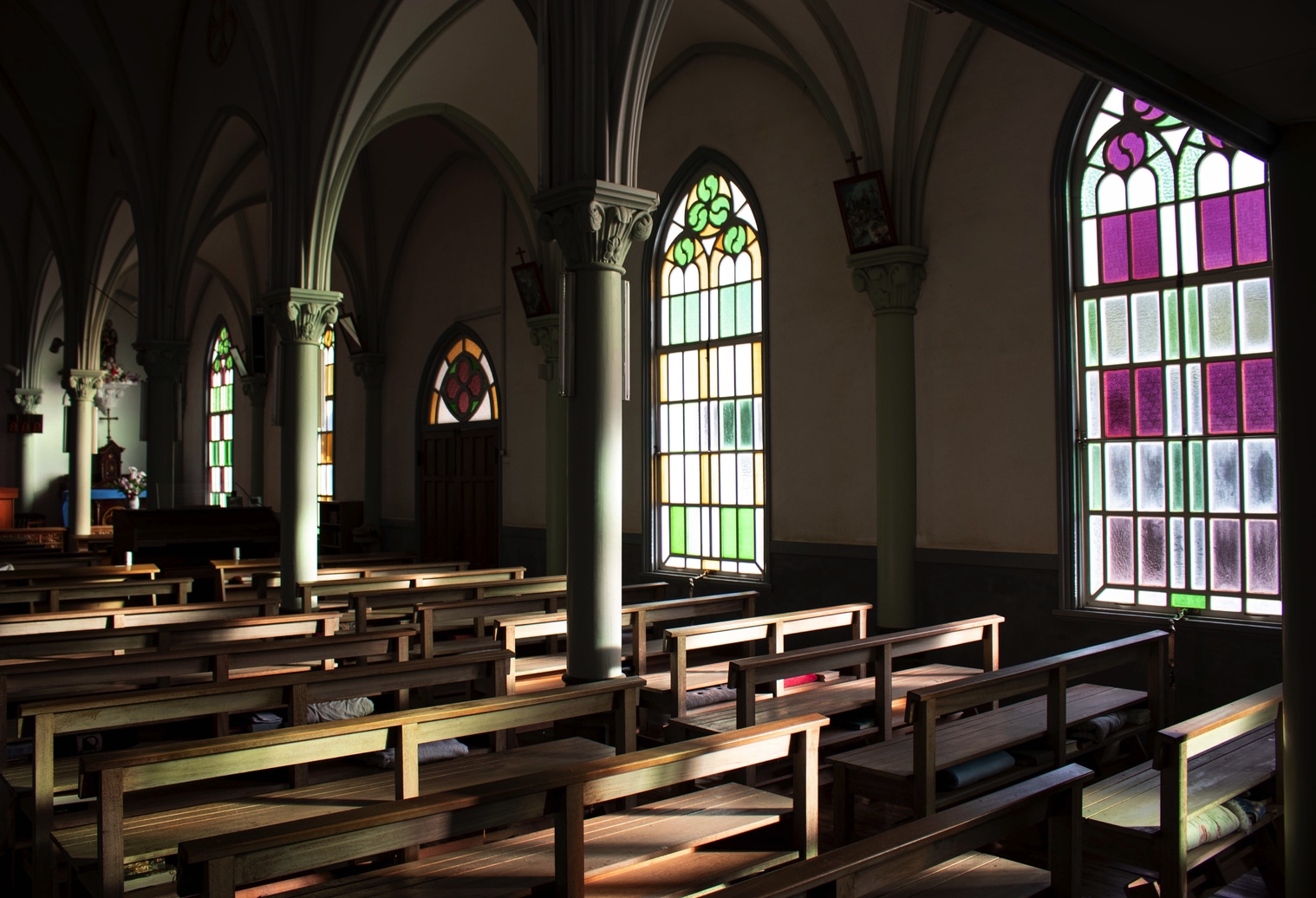
Inside Mizunoura Church
Go to Goto for the churches, stay for the pristine beaches and wild nature.
Here’s a guide to what to do once you’re there, from glamping to a gorgeous lighthouse:
7 Things to Do on Nagasaki’s Goto Islands
[Sponsored]

